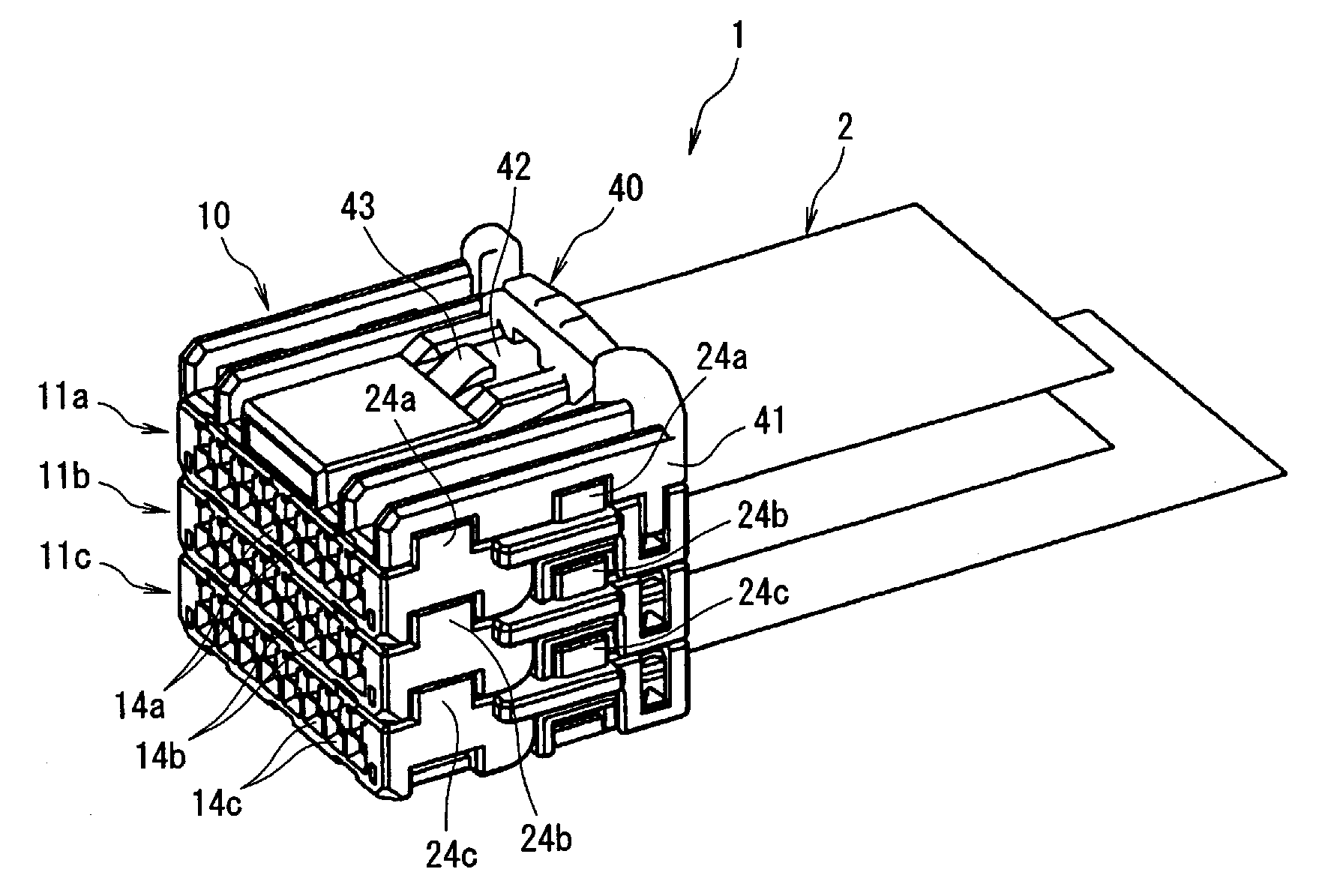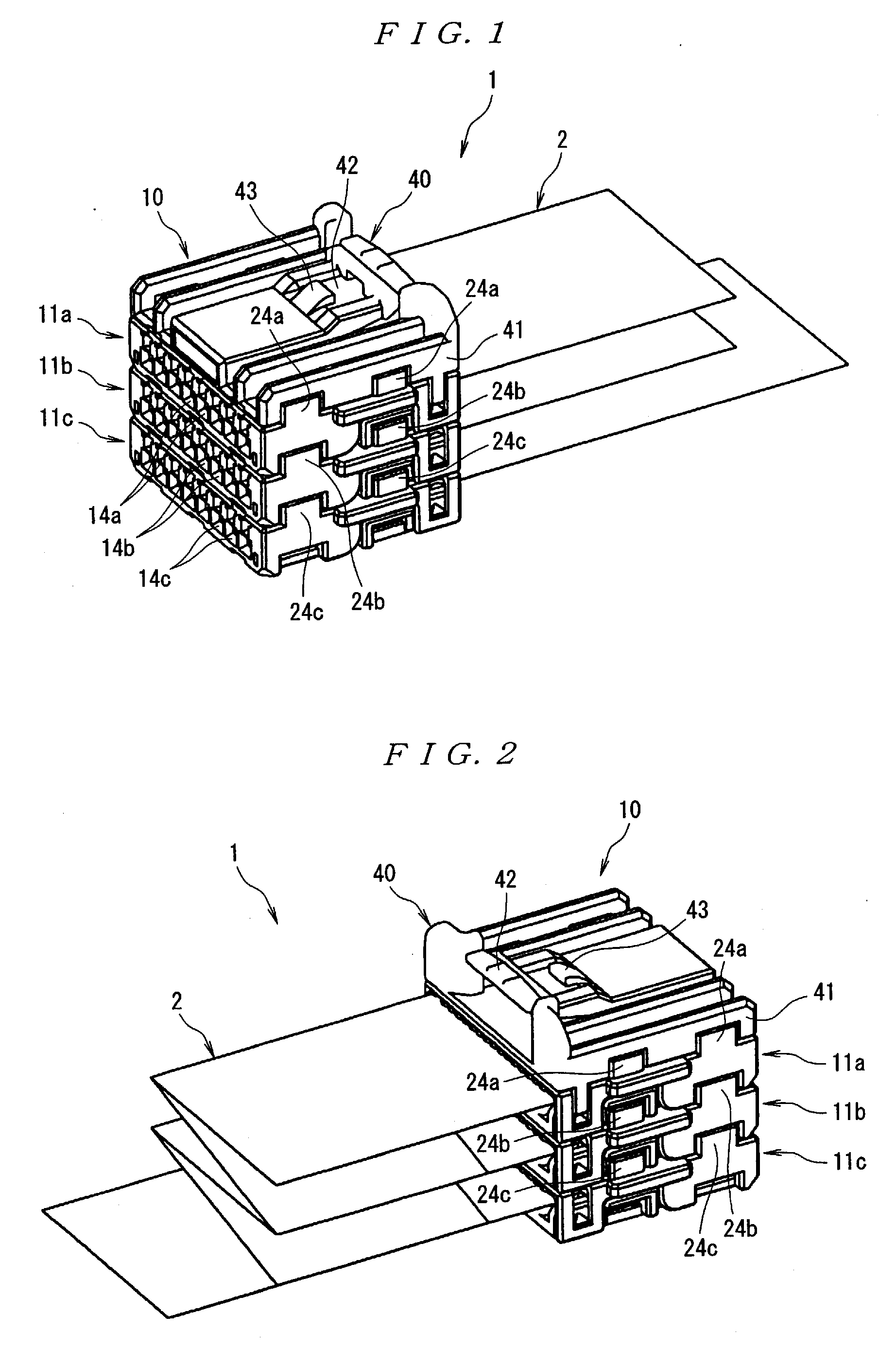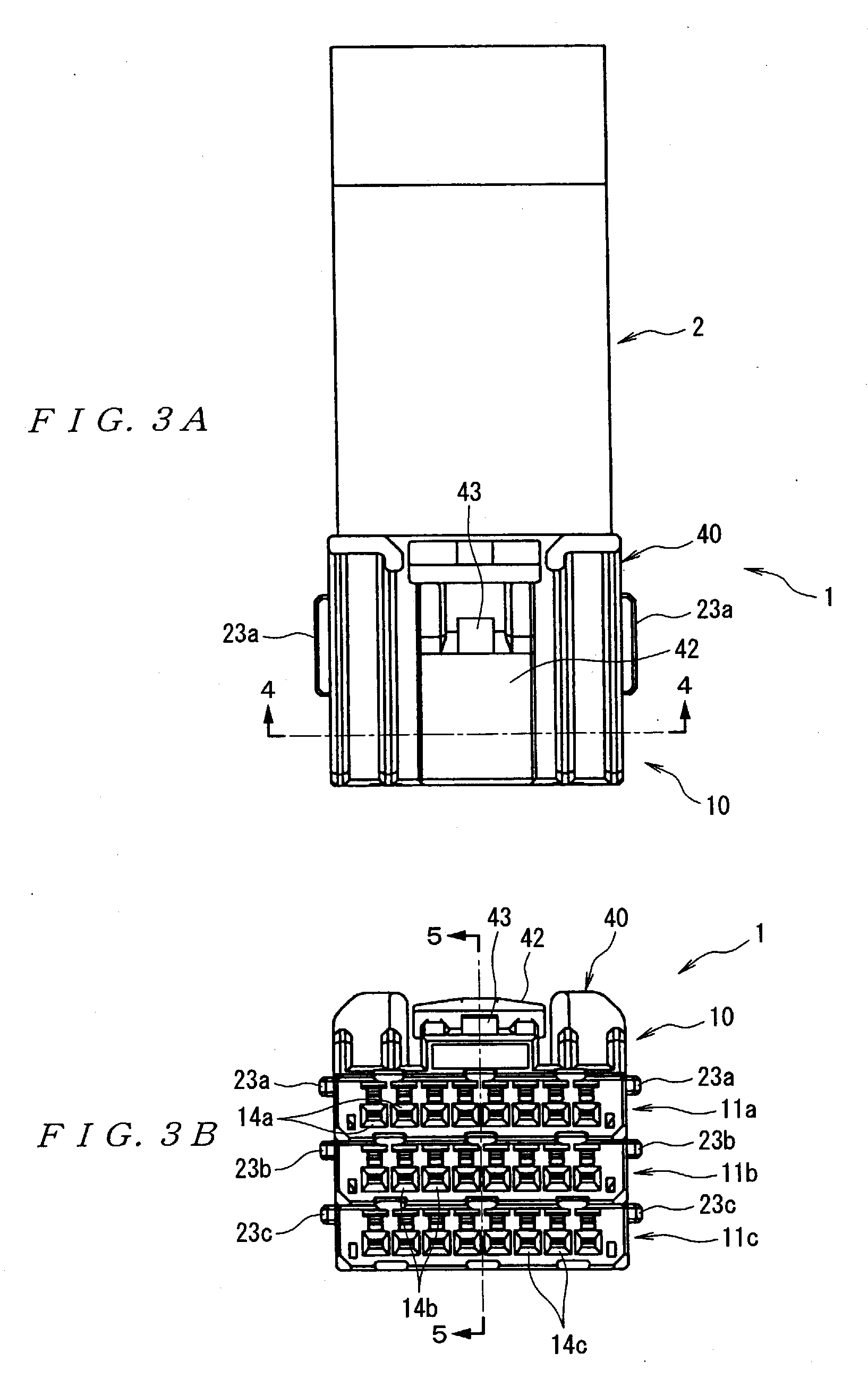Electrical Connector, Wire Harness, and Method for Arranging Wire Harness
a technology of wire harnesses and wire connectors, applied in the direction of fixed connections, securing/insulating coupling contact members, coupling device connections, etc., can solve the problems of troublesome wire harness arrangement, increased cost, complicated manufacturing, etc., and achieve low cost, high degree of freedom, and high degree of freedom
- Summary
- Abstract
- Description
- Claims
- Application Information
AI Technical Summary
Benefits of technology
Problems solved by technology
Method used
Image
Examples
Embodiment Construction
[0035] Next, an embodiment of the present invention will be described with reference to the figures. Referring to FIGS. 1 through 5, the wire harness 1 is formed by connecting an electrical connector 10 to one end of a flexible circuit board (FPC) 2. Here, as is shown in FIG. 6, for example, a FPC 2 is used which has a plurality of conductor patterns 2a on one surface thereof, and which comprises three first terminal sections 3 on one end, five second terminal sections 4 on the other end, and one first terminal section 3 and two second terminal sections 4 substantially in the central portion.
[0036] Here, the electrical connector 10 comprises mutually stackable upper-stage, middle-stage, and lower-stage base housings 11a, 11b, and 11c that have the same shape, and a lock housing 40. Although the electrical connector 10 is not limited to a connector comprising upper-stage, middle-stage, and lower-stage base housings 11a, 11b, and 11c, i.e., three stages of base housings, a case in wh...
PUM
 Login to View More
Login to View More Abstract
Description
Claims
Application Information
 Login to View More
Login to View More - R&D
- Intellectual Property
- Life Sciences
- Materials
- Tech Scout
- Unparalleled Data Quality
- Higher Quality Content
- 60% Fewer Hallucinations
Browse by: Latest US Patents, China's latest patents, Technical Efficacy Thesaurus, Application Domain, Technology Topic, Popular Technical Reports.
© 2025 PatSnap. All rights reserved.Legal|Privacy policy|Modern Slavery Act Transparency Statement|Sitemap|About US| Contact US: help@patsnap.com



